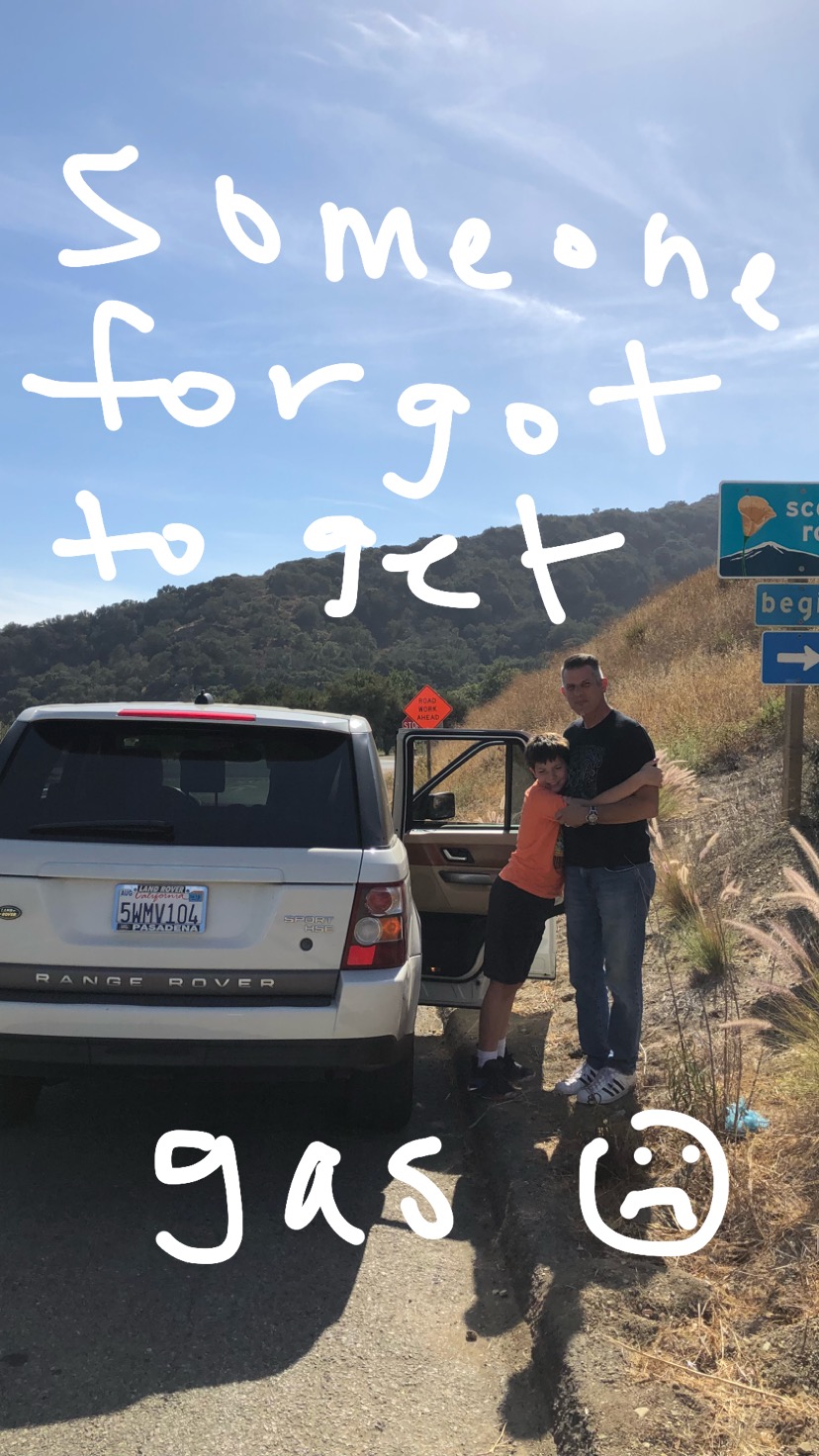BE
Last month, I attended a leaders conference where they spoke about your emotions being a gauge for how your soul is doing. Similar to the gauges on your car dashboard, your emotions can signal to you when something is wrong with your life that you need to start paying attention to. The speaker asked the question "what shows up in your emotions when your soul is running on empty?".
Answers began to flood the room, as people spoke up one after another. "anxiety", "headaches", "irritability", and "anger" were some of the most common answers.
The speaker went on to say that at the root of our emotions is our desire to control our lives to stay above the "water line" of feeling good and looking good.
He referenced the Enneagram as a tool for the "9 places of control" and I was intrigued because I had recently taken the Enneagram test online. If you're unfamiliar with the Enneagram, "Ennea" is the Greek word for "nine". The Enneagram is the 9 pointed diagram of fundamental personality types of human nature.
The primary goal of the Enneagram is self knowledge. The more we know about ourselves, the better we can deal with our blindspots in how we react and relate to others and ultimately form stronger relationships.
Here's how to use the Enneagram for personal growth.
How to Use the Enneagram for Personal Growth
Step 1. Review the Types
The first step is to review the nine personality types and their definitions to see which sounds like it might be most consistent with yourself.
The nine personality types are:
- The Reformer: The Rational, Idealistic Type: Principled, Purposeful, Self-Controlled, and Perfectionistic
- The Helper: The Caring, Interpersonal Type: Demonstrative, Generous, People-Pleasing, and Possessive
- The Achiever: The Success-Oriented, Pragmatic Type: Adaptive, Excelling, Driven, and Image-Conscious
- The Individualist: The Sensitive, Withdrawn Type: Expressive, Dramatic, Self-Absorbed, and Temperamental
- The Investigator: The Intense, Cerebral Type: Perceptive, Innovative, Secretive, and Isolated
- The Loyalist: The Committed, Security-Oriented Type: Engaging, Responsible, Anxious, and Suspicious
- The Enthusiast: The Busy, Fun-Loving Type: Spontaneous, Versatile, Distractible, and Scattered
- The Challenger: The Powerful, Dominating Type: Self-Confident, Decisive, Willful, and Confrontational
- The Peacemaker: The Easygoing, Self-Effacing Type: Receptive, Reassuring, Agreeable, and Complacent
I had read about the 9 personality types before and could not pinpoint which one I fell into because I felt like so many of them overlapped with my personality.
Step 2. Take the Free Enneagram Test
I took the free Enneagram test to help me figure out which category most depicted me. That is step two.
Click on the link to take the free enneagram test.
It was interesting to find that I tied for two categories:
- The Challenger (Type 8)
- The Reformer (Type 1)
There are upsides and downsides to every personality type. I was both inspired and alarmed at what my personality types could become at my best or my worst.
The Challenger: self-assertive, self-confident and strong. Resourceful can-do attitude and passionate inner drive.
- At their best: Self restrained and courageous. May attain true heroism.
- At their worst: Become ruthless, dictatorial, vengeful.
The Reformer: an intense sense of right and wrong. Extremely principled. Truth and justice are primary values.
- At their best: Extraordinarily wise and discerning. Humane, inspiring and hopeful.
- At Their Worst: Can be self righteous and inflexible. Nervous breakdowns are likely.
I resolved to figure out a way to apply my results to everyday scenarios to be more mindful of becoming my best rather than my worst self.
Step 3. Apply Your Results
The root of the Reformer and Challenger personality types are the basic fears of being harmed or controlled by others and of being corrupt or defective. I could see how these could translate as motivators for my desire to control things.
I sought to apply these results by recognizing what I am afraid of and paying attention to when I start to feel anxious or angry.
I asked myself "who am I afraid is trying to control me right now? or "how am I afraid of being corrupt or defective in this scenario?"
Lastly, I asked myself "how important is controlling this one situation?" My hope was that uncovering the answers to these basic underlying fears would help me step outside of the situation and improve my reactions to others as a result.
It didn't take long to get my first opportunity to put this new discovery about myself into practice. On the way home from the conference we ran out of gas on the freeway. Let's just say, I was not driving, so it was already out of my control.
Immediately my body began to panic and anxiety started to take over as I realized we were in danger. I remembered the emotional dashboard example and rather than allowing the anxiety to make me panic, I resolved myself to the fact the situation was out of my control and tried to focus on what I could control, which was calling AAA.
I chose to focus on prayer to center my thoughts while we waited for AAA, rather than spend that time yelling at my husband, which is typically how I would have reacted.
Proud of myself for not spontaneously combusting in anger and anxiety on the side of the road, I discovered that in answering these questions for myself when I notice my emotions getting colorful, I can deal with the root of the problem causing the negative feelings and overcome it.
Step 4: Talk to Someone
No matter which of the 9 points of control you tend to fall into most, it's imperative that you have an outlet for your emotions to stay on the best side of your personality rather than drift toward the worst side.
Talking to someone you can trust to share your emotions with is hugely important for offloading stress. For me, that person is my best friend. I will often call her whenever the lights on my emotional dashboard are going off, and she listens and talks me off the ledge.
Allowing yourself to be enough for each day is also key. Even if I haven't checked everything off my to-do list, at the end of the day I have to tell myself it was enough rather than try to push through to achieve more than my body can handle.
Summary
To recap, the Enneagram is a useful tool for self-awareness and personal growth. The 9 personality types of the Enneagram and their definitions can serve as a guide for understanding what motivates our desires to control our lives and submit to the fact we are not in control. Four ways to use the Enneagram for self awareness are:
- Review the 9 types.
- Take the free Enneagram test.
- Apply your results to real-life scenarios.
- Talk to someone
As we discover more about what drives our emotions, we can grow and change into the best versions of ourselves that we hope to become.
Here's to becoming.
XO,
 Welcome to Honey & Figs! I'm Lisa. I love helping people with practical ways to live more abundant lives based on my own experience. You can click here to find out more about me.
Welcome to Honey & Figs! I'm Lisa. I love helping people with practical ways to live more abundant lives based on my own experience. You can click here to find out more about me.
Become part of the Honey & Figs Community & get the Newsletter
[tco_subscribe form="12337"]


